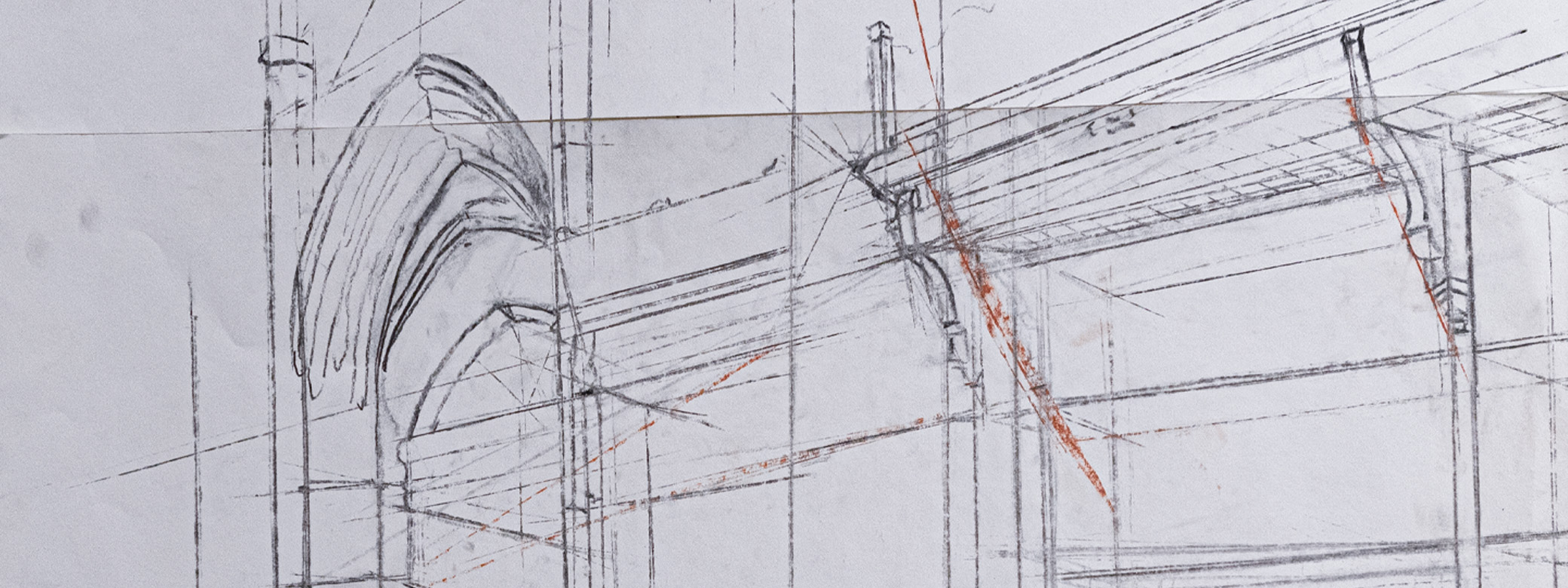DESIGN 214: Marks + Symbols is an advanced visual design course where students design a typeface (in groups) and a set of symbols (individually, or in pairs).
Previous examples of student projects from this course may be viewed at:
https://www.flickr.com/photos/uw_design/albums/72157629304792692 (Type Design)
https://www.flickr.com/photos/uw_design/albums/72157651239664858 (Symbol Sets)
This course is restricted to undergraduate and graduate Design majors (students in the UW Division of Design and selected students in the UW MHCI+D program. The course is full.
If you are not a UW Design or UW MHCI+D student and you wish to request a seat in the class, please email me at kcheng@uw.edu. In your email, please include a link to your online visual design portfolio, or attach a PDF (10MB maximum) of your design work. Please also explain your prior experience/qualifications in visual design. Please note that in order to succeed in this course, students must have intermediate knowledge in visual communication design (typography, color, composition, etc.). This course also requires that students have intermediate to advanced skills with Adobe Creative Cloud (Links to an external site.) (Illustrator (Links to an external site.), Photoshop (Links to an external site.) and InDesign (Links to an external site.)) or the equivalent (Affinity (Links to an external site.)).
Enrolled students, please note the UW Design Division First Day Policy.
COURSE CALENDAR
Available as a Google spreadsheet. The calendar and projects may be revised during the quarter as needed: https://docs.google.com/spreadsheets/d/1EQKjzMeoOZeSJcPt-Pi7NjGylFHD_1N-0ZuolJk7pf4/edit?usp=sharing
REQUIRED MATERIALS
Course Textbook:
Designing Type by Karen Cheng — be sure to get the new second edition.
Available online at Amazon and Bookshop.org (an Amazon competitor supporting independent bookstores).
Unfortunately, there are a few errors in this new second edition—please download and note these corrections in your copy.
Software:
Adobe Photoshop, any version—or similar photo processing program (i.e., Affinity Photo)
Adobe Illustrator, any version—or similar layout program (i.e., Affinity Designer)
Figma account (free for UW students)
Glyphs Mini (we can reimburse each group for this expense)
Note that there is a 30-day free trial for Glyphs Mini AND a 30-day free trial for the regular (full) Glyphs software.
For many of you, this combined 60-day period will be long enough to complete your work.
There is a Glyphs Mini Manual here: https://glyphsapp.com/downloads/handbook/GlyphsMini-Handbook-2.0.pdf
There is a Glyphs Full Manual here: https://www.ntf.uni-lj.si/igt/wp-content/uploads/sites/8/2015/09/Glyphs-Handbook-2013.pdf
Supplies:
Lead pencils (2H, H) for drawing letters
Scissors (or x-acto knife with cutting mat)
Ruler (or architect scale) for measuring
Drafting triangles
Eraser (white MARS and/or kneadable)
Adhesive tape (Scotch)
Vellum tracing paper, preferably 90 gr. (heavy enough not to curl) with or without gridlines.
Canson brand vellum paper is one option; Clearprint is another reliable brand.
You also need black markers that work on vellum paper.
The UW Bookstore carries a wide variety of Sakura markers; they also have Sharpie markers that work on vellum.
LEARNING GOALS + COURSE OBJECTIVES
This course introduces students to the formal and conceptual problems associated with mark and symbol design. In the first half of the course, students will design (in groups) a typeface that is based on an existing typographic image. From this activity, students will learn:
—How to create a set of abstract symbols (letters/glyphs) balanced between unity + variety.
—The limitations of manipulating letterforms, which is the foundation for effective mark-making.
In the second half of the course, students will work individually and collaboratively (in groups) to research and develop a symbol set for a specific communication goal/purpose. From this activity, students will:
—Understand what makes an effective or ineffective symbol—visually and conceptually.
—Be able to design symbols that effectively communicate an entity or idea.
—Be able to identify specific types/classes of symbols, and be able to determine the most suitable types/classes for a specific communication problem.
EXPECTATIONS
To prevent the spread COVID after Spring Break, UW has recommended we all wear masks for the first two weeks of the Spring quarter. I would personally appreciate if you can do this, because I live with a person who is at higher risk.
You will derive the greatest benefit from this class if you pay attention, engage and interact with faculty, senior mentors, and your classmates. In the event that you need to miss class, please let me know as soon as possible via email. We do understand that students may have unexpected illnesses or personal emergencies. However, please be sure to have at least two other student colleagues in the class who you can contact (via email and/or text) to review any missed discussions or assignments. I (and all design faculty) receive many emails. Therefore it's best if you can first acquire notes and materials from a classmate, then e-mail me with any remaining questions.
If you experience a personal problem preventing you from completing your work, email me and your teammates as soon as possible. The recent pandemic and ongoing social/political issues have made life difficult and stressful for many, and we need to be compassionate and flexible with each other. This means:
—You and your teammates may need to take on additional letters if a teammate is indisposed;
—You and your teammates may experience project delays when letters are not complete.
To minimize negative impacts:
—Plan to communicate daily with your team members regarding your progress (Discord, Slack, text, etc.)
—Upload all completed letters to a shared Figma and/or drive space so that all team members always have access to the latest and most complete version of the typeface.
—Use a consistent naming convention with the date and military time: “A_30Mar_1300.jpg”
Prioritize quality vs. quantity: it is far better to draw fewer letters correctly rather than many letters poorly. Imprecise letters will need to be redrawn, so take time with each glyph.
COURSE COMMUNICATIONS + POLICIES
Class Email list:
Anyone in the class is welcome to email the entire class using this email: design214a_sp23@uw.edu
Please check your account at least twice each day (i.e., in the morning at 9am and at the end of the day at 5pm).
Optional Discord Group
Anyone in the class is welcome to join this optional Discord group by clicking on this link.
Please use your official UW name (on our class list) to join. I will delete names that are not on our class list. The purpose of the group is to provide a venue for students in the class to meet and talk to each other about DESIGN 214. For example, you can ask for critique, offer to share materials, etc. Please be kind and courteous to each other in the group. Posts with swearing/four-letter words and/or hate speech or bullying will be deleted. We will also delete sales promotions and self-promotions.
UW Policies
Please read these official policies of the UW School of Art + Art History + Design as well as these additional policies here: https://art.washington.edu/policies
GRADING
As in any art or design course, grading is subjective. Your final grade is based on the quality of the final projects, your design process and your class participation, as assessed by peers in your working group(s) and faculty.
3.8–4.0 is given to a student who has exhibited the highest possible performance in all aspects of the course—the final projects, design process and overall participation are excellent. This student independently seeks out additional information and is highly committed/passionate about their work.
3.4–3.7 is given to a student who exhibits superior performance in all aspects of the course— the final projects, design process, and participation are uniformly of high quality. This student has a thorough understanding of all concepts presented, and is motivated to improve and succeed.
2.9–3.3 is given to a student who has good performance in most aspects of the course. This student follows a thorough design process, has good design work, and consistent participation that reflects a clear understanding of almost all concepts being presented.
2.5–2.8 is given to a student who has fair performance in the course. The final work is adequate, with a design process that reflects the minimum effort needed to complete assignments. This student has moderate participation and motivation.
0–2.4 is given to a student with poor performance in the course. Projects are incorrectly prepared, incomplete or missing. This student does not understand the majority of concepts that are presented and rarely participates in class. This student is not prepared for subsequent courses in design.
Grading Rubric:
Part 1: Type Design = 35 pts
25 pts = Grade for Type Design Board
10 pts = Peer Eval (I will average together across all peers)
+3 bonus pts for being the group type-master (can be divided amongst more than one person)
+3 bonus pts for designing the group type poster (can be divided amongst more than one person)
Part 2: Symbol Design = 30 pts
30/ 10 pts = Grade for Symbol Display Board
0 / 10 pts = Grade for the design of your individual symbols (as documented)
0/ 10 pts = Peer Eval (Only for those who work in pairs)
Part 3: Participation in Class = 10 pts
Average of your class attendance (excluding excused absences for illness, personal issues, etc.)
up to 3 pts bonus if you have been particularly active/engaged—i.e., giving insightful critique, etc.
up to 3 pts deduction if you have been disengaged during critique—rare or few comments)
Note: Bonus/Penalty is a subjective judgement on my part
TOTAL POSSIBLE PTS: 75 pts + 12 possible bonus pts
After calculation of all point totals, I will apply a grading curve.

